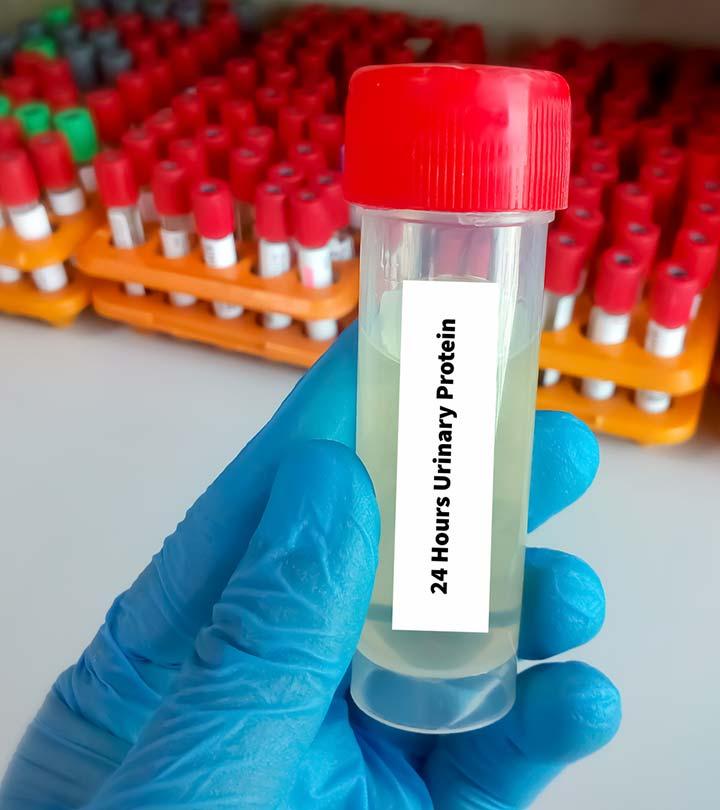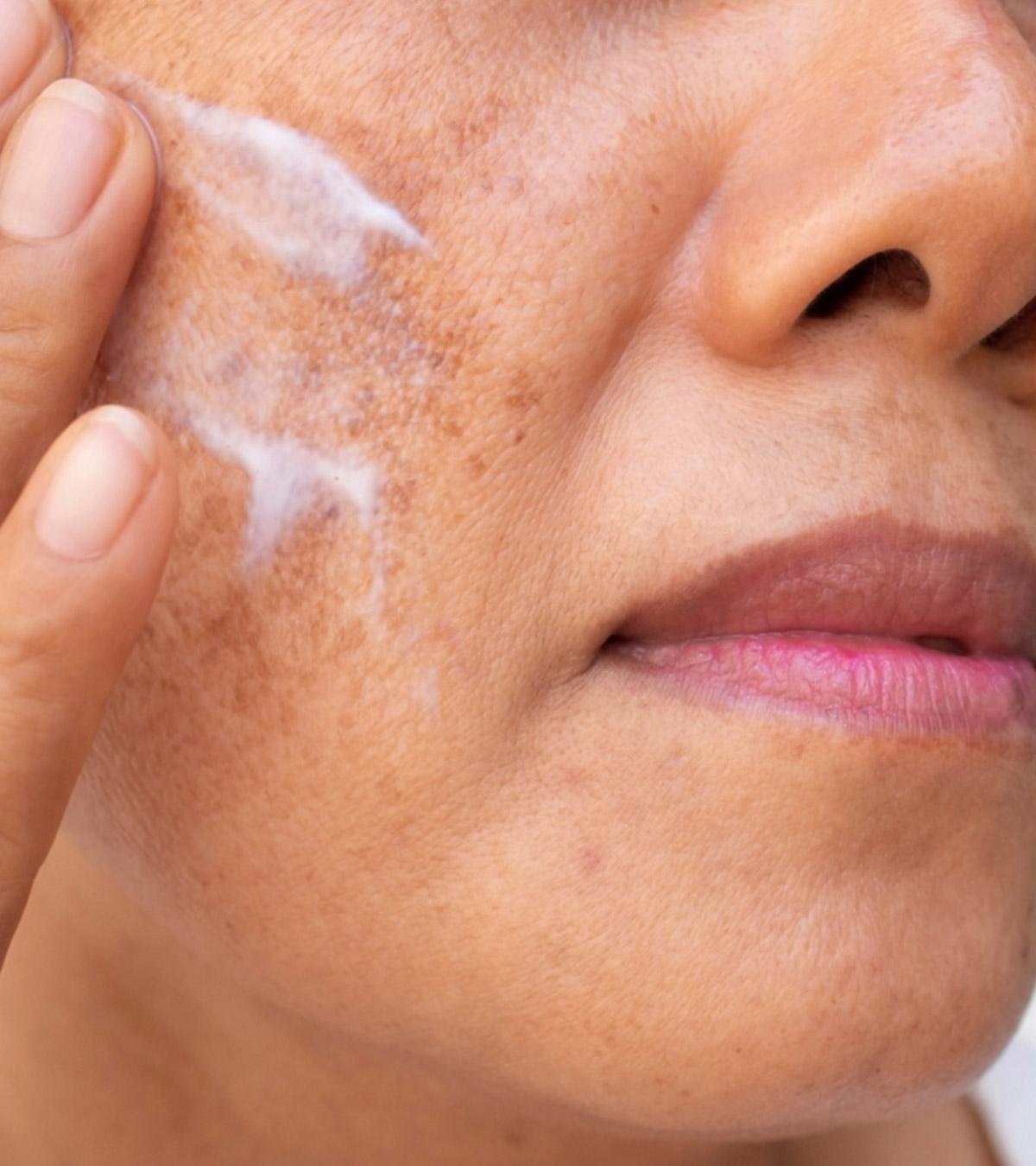
Yeast infection in toddlers occurs on body parts that offer proper growth conditions to the fungus, such as adequate moisture, heat, and darkness. This infection is also called candidiasis and is recognized by the excess growth of yeast on the skin or mouth. The causative strain is candida fungus. This microorganism naturally occurs on the intestines, skin, genital area, and mouth.
Yeast infection commonly occurs in the diaper area due to the optimal environment. Read on to know more about its causes, signs, diagnosis, treatment, and prevention.
Causes Of Yeast Infection In Toddlers
A toddler can get candida or yeast infection due to the following conditions and factors (1).
- Antibiotic use
- Inadequate changing of diapers leaving the area damp
- Corticosteroid use
- Diabetes
Image: IStock
- Autoimmune conditions
- Soaps, shower gel, or other skincare products
- Tight diapers or undergarments
- Immunosuppressant medications
- Weak immune system due to conditions such as AIDS
Yeast infection in toddlers usually happens in the diaper area, but it can affect the skin on any part of the body.
Signs And Symptoms Of Yeast Infection In Toddlers
Image: Shutterstock
The following signs are symptoms are commonly seen in pediatric yeast infection (2).
- Skin itchiness
- Constant irritation in the affected area
- Pain while urination
- Swelling of the vagina
- Skin rashes and white spots
- Vaginal discharge with odor
- Penile discharge with odor
- Oral yeast infection or oral thrush causes a thick white coating on the tongue. It looks like milk or curd. But on trying to remove it, it comes out with difficulty leaving a bleeding surface.
The signs and symptoms of toddler yeast infection may vary in each child, depending on the severity of the infection and the affected area. Recalling when her baby girl developed yeast infection on her skin, Julie, a blogger and mother, says, “I had tried to always remember to clean Lillian’s (her daughter) neck whenever we bathed her, but I didn’t look deep enough. Finally, I lost some timidity and looked and found that beneath the fold I had been cleaning was a deeper fold in which fungus had started to grow and the skin inside was sore and red and weepy (i).”
In the case of the diaper area, it becomes red, swollen, and tender to touch. The skin may peel off. In the case of oral thrush/candida infection, the toddler cannot eat or drink because of the pain in the mouth. You may seek expert advice to diagnose and treat the infection before it spreads to larger areas of the body.
 Be watchful
Be watchfulComplications Of Yeast Infection
Yeast infections are not dangerous for most toddlers. However, it can be irritating in most cases. Toddlers may feel uncomfortable due to the constant itchiness and pain in the affected area.
In rare cases, especially in toddlers with weakened immune systems, the yeast infection may spread to the bloodstream and cause candidemia. Yeast infection may also spread to organs and tissues to cause invasive candidiasis. Toddlers with candidemia and invasive candidiasis require long-term intravenous medications to cure the condition.
Prevention Of Yeast Infection In Toddlers
The following tips could help to prevent yeast infection in toddlers (3).
- Sterilize and replace pacifiers on time since yeast could be present on older pacifiers.
Image: Shutterstock
- Use antibiotics and corticosteroids only when necessary and as per the doctor’s prescription. and not for prolonged use.
- Replace and sterilize bottle nipples to minimize the risk of oral yeast infection.
Image: IStock
- Maintain good hygiene by changing diapers frequently to ensure the diaper area remains clean and dry.
- Always wash and air-dry the diaper area before putting on a fresh diaper.
- Use mild soaps and other skincare products for bathing the baby.
- Dress the baby in loose, single-layered clothing in hot or humid weather.
Yeast infection in the diaper area often resolves once the child stops using diapers. Long-lasting oral thrush could be due to the use of old pacifiers or bottle nipples bottles.
Recurrent yeast infections may indicate weak immune systems or other serious conditions. Seeking timely medical care could help in early diagnosis, treatment, and prevention of complications.
 Point to consider
Point to considerDiagnosis Of Yeast Infection In Toddlers
Image: Shutterstock
Doctors can diagnose yeast infection from signs and physical examination. They may ask about the onset of symptoms, such as when the itching or discharge started, and the toddler’s diaper-changing routine. The doctor may also ask about the history of antibiotic use or the use of other medications.
During the physical examination, swabs from affected areas are collected for evaluation under a microscope. Vaginal or penile discharges are also analyzed to rule out other infections.
Is It A Diaper Rash Or A Yeast Infection?
or diaper dermatitis is skin irritation due to wet or soiled diapers and is not fungal. However, a diaper rash could be mistaken for yeast infection. Also, the development of yeast infection can worsen existing diaper rash.
Diaper rash could be associated with a history of severe diarrhea or changes in the diet, such as the introduction of solid foods. The following signs may help differentiate yeast infection from diaper rash in toddlers.
- Yeast infection shows no improvement with diaper rash cream.
- In yeast infection, skin irritation is seen in the thigh creases or folds, whereas diaper rash can be seen anywhere the skin touches the diaper
- Red small bumps are seen in the yeast infection
Babies with diaper rash may show improvement with other management techniques, such as petroleum jelly, while these techniques do not help in yeast infection.
Treatment For Yeast Infection In Toddlers
The treatment of yeast infection in toddlers depends on its severity and the extent of infection. The following are the various treatment options that could be considered (4).
- Antifungal creams or powders are prescribed for application on the affected area. You may have to keep the baby diaper-free for some time after the application.
- Oral thrush is usually observed for two weeks before initiating antifungal treatments since it may resolve by itself in a few weeks.
- Oral antifungal medicines are prescribed for uncomplicated candidiasis in toddlers.
 Things to know
Things to knowComplicated cases of candidiasis, such as invasive candidiasis, may require intravenous antifungal medications. Non-prescription antifungals are not safe and effective for yeast infection. Mild yeast infection in the diaper area may not require any medication and may improve by keeping the baby diaper-free for many hours a day.
Frequently Asked Questions
1. What happens if you have a yeast infection for too long?
If the yeast infection is left untreated, the itching and redness could get unbearable. The infection could also spread to the remaining areas and cause other health conditions.
2. Is it alright to scratch when you have a yeast infection?
No, it is not suggested to scratch when you have a yeast infection. Although it is a challenging task to resist the urge to scratch, this action could crack the skin and lead to inflammation. It may also spread the infection to other areas of the skin.
3. Is cold or hot water better to subdue a yeast infection?
A cold water compress could subdue the irritation caused by yeast infection. However, some children may also find relief with a warm water bath. Consult your child’s pediatrician to know which temperature would work best for them.
Yeast infection in toddlers is a common skin issue that can be treated efficiently with the right type of care. The issue usually resolves within two weeks of treatment if proper care is taken and necessary precautions are followed. However, the infection may recur if the environmental factors are favorable to the condition. In such situations, it is best to get in touch with your toddler’s pediatrician and find an appropriate skincare routine to minimalize the effects and further growth of the problem.
Infographic: Types And Prevention Of Candidiasis In Toddlers
Most superficial yeast infections in toddlers are manageable when analyzed early. However, in some cases, the infections may be severe, warranting emergency medical care. Here is an infographic that lists the types and preventive measures for yeast infections in toddlers. Illustration: Momjunction Design Team
Key Pointers
- Yeast infection (candidiasis) in toddlers could be caused due to autoimmunity, antibiotic or chemical use, and tight-fitting clothing.
- Common signs of this condition are rashes, swelling, pain, or discharge in the privates.
- If left untreated, this pediatric infection might lead to complications such as candidemia.
- Oral and anti-fungal topical medications are effective in treating this condition.
Personal Experience: Source
MomJunction articles include first-hand experiences to provide you with better insights through real-life narratives. Here are the sources of personal accounts referenced in this article.
i. My experience with coconut oil, yeast and chubby babies;https://juliesurprise.blogspot.com/2009/03/my-experience-with-coconut-oil-yeast.html
References
1. Yeast Infections in Girls and Young Women; Healthychildren; The American Academy Of Pediatrics
2. Candidiasis in Children; Nationwide Children’s Hospital
3. Thrush and Other Candida Infections; Healthychildren; The American Academy Of Pediatrics
4. Yeast Infection (Candidiasis); Cincinnati Children’s Hospital
Read full bio of Dr. Mubina Agboatwalla
Read full bio of Rohit Garoo
Read full bio of Shinta Liz Sunny

























